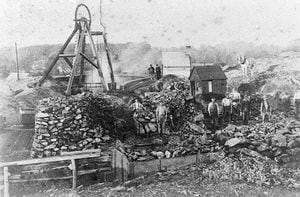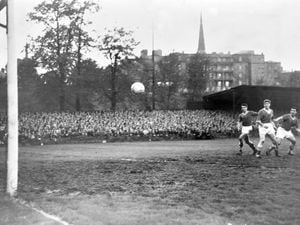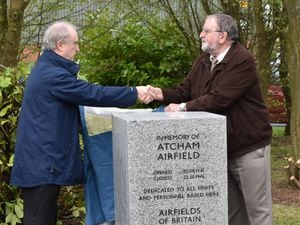Shropshire's little pits which played their part
The Shrewsbury coalfields have long been overshadowed by bigger, and frankly better and more important coalfields elsewhere in Shropshire.

But now author and historian Michael Shaw has dug up the full story of the mines which tapped into the coal seams stretching close to the county town.
There were dozens of them, many being very small, but still providing valuable - if hard - jobs for local people and being important in their time to their local communities.
Here and there in the rural landscape mostly south west of the county town there remain pit mounds softened by nature, or occasionally structures or ruined buildings.
However in many cases the only surviving clue that they existed at all is a pit name lingering on in some old document or map.
"The Shrewsbury coalfields were not of national or regional or even county importance. Even locally they were pretty insignificant," says Mike, who has long had an interest in industrial history, and has lived in Shropshire for the last 35 years. He had a career in local government as a building control surveyor.
The coalfields stretch from the Haughmond Hill area, through Uffington, Hanwood, Pontesbury and Westbury, and also in the Condover and Leebotwood areas, with a separate small field at Dryton, near Eaton Constantine.
"The coalfield, though 'wrapping' Shrewsbury, had very little effect on the county town and remained totally rural, with Pontesbury being the only settlement of any size, the historical parish including most of the significant mines."
The quality of the coal from the Shrewsbury coalfields was very variable, some of it being high in sulphur and quite unsuitable for domestic use, and used mainly for firing bricks and in lime kilns.
If the mines in the Shrewsbury coalfields were not up to much, why bother writing a history about them at all?
"They were not alone in scale and unimportance. Several areas of the country had similar sources, but if away from a navigable river which passed suitable mines, and before the coming of the canals and railways, had great significance for their localities and deserve to be remembered and celebrated."
The book is called "The Mines of the Shrewsbury Coalfields" and has been self published by Mike through YouCaxton Publications. It costs £15 and can be obtained direct from him at 01743 356697 or at mjshaw061@gmail.com by email.
Mike says that unlike the lead and barytes mines of the area, the coal mines have left a much less obvious mark. Just three recognisable engine houses are left standing, all on the Snailbeach mine company's Pontesford Colliery.
"Two of them are long converted into dwellings and the third is a ruin. One survives at Shorthill though so much altered as to render its initial purpose invisible."
Along with the pits which did exist there was at least one which seems to have been a fraudulent figment of the imagination. A heavily in debt landowner, John Davies, offered 1,000 shares at £100 each in a company to exploit the coal, salt, and ironstone he claimed to have discovered on the common at Church Preen in 1727. Shortly afterwards he was imprisoned for debt.





